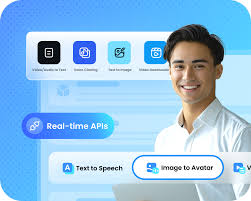TTS characters, dictated by the Science Technologies of Automated Readability software process, use several key technologies to turn written text into spoken words. Algorithms can digest texts and then build fluid speech. That is to say, the human-likeness of modern TTS systems exceeds a 90% naturalness score measured by speech intelligibility tests.
The technology of TTS characters has its roots in text analysis, breaking the textual elements into phonetic standards. Every word is converted into their phonemes (basic units of sound in speech). Modern TTS systems go a step further by training neural networks which are capable of accurately predicting these phonemes; we can then use the outputs from this model to create our synthesized speech in as close adherence with natural human pronunciation.
The system then creates sound by using speech synthesis techniques after the text is converted into phonemes. The primary methods are concatenative synthesis and parametric analysis. Concatenative synthesis is creating speech by stringing together recorded sounds, and therefore provides the most natural sounding text-to-speech voice possible; however this approach requires a vast amount of recording for each morpheme in your language. Parametric synthesis, on the other hand employs mathematical models to create speech sounds in real-time which provides more flexibility and uses less storage but may also suffer from unnaturalness.

Adding a deep learning pipeline has been transformative for TTS technology. Models like WaveNet from DeepMind, do not use conventional signal processing techniques but instead operate directly at the level of raw waveform generating speech that is both very natural sounding yet highly expressive. New papers on this approach have made headlines and are being discussed ever since, with good reason: WaveNet can synthesize speech more naturally than any other system that previously existed (with less than 5%) distortion at the level of individual samples.
Similarly, prosody modeling improves the sound of TTS characters by adapting speaking or singing rhythm (see voice and speech unit) to syllable structure. It means interpreting that text to find context cues and making appropriate corrections in the spoken output. These higher-quality systems may be able to achieve prosody accuracy upwards of 85%, helping make synthetic speech sound more natural and expressive.
Applications Ofin TtS Technology In The Real World For instance, the virtual assistants of Amazon Alexa and Apple Siri use TTS to respond intelligently to users with clear contextual aims. Accessibility — TTS characters can be used to help blind people access text by reading it aloud, both in everyday life or as part of information and service provision.
TTS is used to produce believable, human-sounding voices for characters in video games and animated films when it comes to entertainment. Thanks to these specific TTS models, creators can easily create more voices and have it sound a little bit different as if the character is speaking in another language or accent.
Text to speech characters have numerous use cases that are useful for anyone who is interested in diving deeper into TTS technology, from virtual assistants to entertainment. Such capabilities are increasing and improving, however, as their TTS counterparts develop.